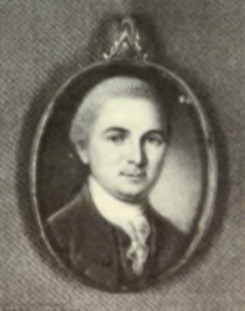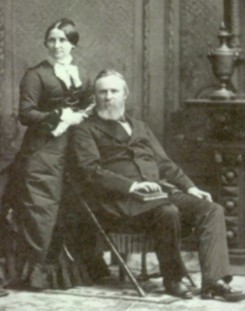
The Marble family traces its history back to Heptfordshire, in England’s fabled Middle Country; a land of gently rolling green hills, comfortable little villages and thick old-wood forests. As far as the historical record describes, the first mention of the Marble family is in the Heptfordshire County Register in the year 1558 AD. Upon these yellowing and aged pages, one finds the simple, yet elegant, name John Marble, a quarry owner whose cottage was just a few furlongs outside the ancient walls of Sanding on the Bun, the old county seat of Heptfordshire.
No doubt John’s sur-name was derived from his trade, that of a marble quarrieer. For many years past, the Heptfordshire region had been known as the producer of the world’s finest marble; for a vein of the purest and cleanest marble could be found just below Himbry’s Hills to the north of Sanding on the Bun. Folklore and legend tells that the Marble family was known for its piety and humility, and it is therefore not surprising that the Marbles were quick to join the growing Puritan movement in there era between the Tudor and Stewart monarchs.
Official battle-rolls tell of one Arthur Marble, perhaps grandson of John Marble, who fought as a yeoman in the army of Cromwell’s “Roundheads” during the English Civil War. Although he was killed at the famous Battle of Bither’s Bridge, his brother Elucid Marble, a presbyt of the local Church of the Painful Crucifixion, lived through the horrors of the Civil War and into the tyranny of the Protectorate, a time when Puritan rule dominated England. After the Restoration, when Charles the Second came to the throne, Elucid’s son, Cotton Marble, fled England and its growing resentment of the Puritans, to settle in the Massachusetts Colony in the year 1651. The Marble family adopted their new home and took well to their surroundings, setting up a prosperous farm outside of Boston.
Little is known of the Marble family, until 1774, when Boston merchant and secret Son of Liberty, Samuel Marble took part in the infamous Tea Party, when angry colonists tossed British tea into the harbor in protest of outrageous Parliamentary passing of the hated “Tea Act.” Samuel Marble, and his two sons, Abraham and Horatio Marble, joined the Boston Militia in the spring of 1775, just in time to hear Paul Revere ride through the town, warning of British troops’ march toward the munitions stores at Lexington and Concord. Although historians disagree on the fact, there are many sources that point toward the idea that it was in fact Horatio Marble who fired the infamous “Shot Heard Round the World” which began the American War of Independence. Samuel and Horatio both gave their lives to the cause of American freedom at the Battle of Bunker Hill, but Abraham lived through the Declaration of Independence in 1776 and through the bitter winter at Valley Forge.

Son of Liberty Samuel Marble
After the Battle of Trenton, Abraham Marble was made a Captain in the Continental Army under George Washington and served bravely through the next few years as the fledgling Republic struggled to win its independence against overwhelming odds. History shows that it was Abraham Marble who stood at General George Washington’s side when he accepted British General Cornwallis’s surrender at the decisive Battle of Yorktown in 1781. It was a proud time for the United States of America, and an equally proud time for the Marbles.
Abraham settled back to the newly free Boston, where he began a shipping business to provide prosperity for the future generations of Marbles. The Marble family stayed in Boston until the 1840s, when young and adventurous Andrew Marble left the family home to go West into the Ohio territory. With his wife Elizabeth and his three children; Jonathan, Bertha and Zachary, Marble left Boston on an arduous journey west across the vast expanse of Pennsylvania, to the virgin territories of the Ohio River Valley.
Setting up a homestead in Zion, Ohio, the Marbles began a new life in the west. It was to prove prosperous. Although Jonathan was to die of dropsy, youngest son Zachary was a jubilant spirit who studied the law in Fort Clever (later to be known as Cleveland) and was eventually elected to the Ohio Legislature. With great skill, fortitude and strength of spirit, Zachary Marble would prove to be a popular legislator, so popular in fact, that in 1858 he narrowly defeated Purvis Godfrey in the gubernatorial election. From 1858 until 1866 Zachary Marble served as Governor of the State of Ohio, seeing the region through the dangerous times of the Civil War, a time when the country was nearly torn in two.

Ohio Governor Zachary Marble with wife Delores Grunion-Marble
Zachary Marble’s youngest son, Rutherford Marble, was a private in the Third Ohio Volunteers Regiment which participated in Sherman’s infamous “March to the Sea” during the latter years of the U.S. Civil War. It is believed that it was Rutherford who first thought up the idea of torching Georgian cities, a circumstance that developed when he left a cigar burning in an Atlanta brothel in 1844.
As remarkable an achievement as that is, Rutherford was to go on to greater things during the Gilded Age which followed the destruction of the Civil War. Eking out a clerk’s wage in Columbus, Ohio following the war, Rutherford changed vocations, decided that tallying dry goods was not his true calling. Instead he took a job as a daylayborer at the National-Ohio Ball Bearing Plant in Columbus, where during his lunch breaks, he devised a game which involved rolling the ball bearings about a chalk circle outside the foundry.
This game was to prove popular, and throughout the city youths began to play “Marble’s Game.” The Blam-Co Toy Company purchased the rights to Marble’s Game, and rechristened it “marbles,” and the game became an instant hit with young people across the United States. With his earnings and royalties coming in from the ever-popular marbles, Rutherford retired in luxury. Throughout the Turn of the Century, it seems that the Marble family led a simply Rockwellian existence, a time of fresh apple pie, cool lemonade, and crispy fried chicken served on delightfully antiquated red and white chequered table cloths at church picnics.

Children playing “Marble’s Game”
It was not until the 1940s that history again met with the Marble family, when Monty Marble went off to fight in the Second World War, leaving his wife Mabel Marble and her two young daughters Martha and Mavis to keep up the fight at the home front. Mabel Marble did what every civilian did during those dark and dangerous days when fascism threatened the free world; she joined up at her local War Office for a job in a factory; building the machines of war that would enable freedom to survive.
Mabel Marble worked twelve hour shifts at the Ohio Shipyards at the bustling port of Columbus, where she spent long, hot hours riveting the iron plates of Battleship and Escort Carrier hulls. When war photographer Robert Capa visited the Ohio Shipyards, he happened upon young Mabel Marble endeavoring in the cause of freedom. He snapped her picture, which was to become a classic; for it was this picture that would be used as the basis for the popular character of Rosie the Riveter; an inspiration to women everywhere.

Mabel Marble: She Can Do It.
Mabel Marble was indeed a proud and tough woman, who never gave up and did whatever she could to help the Allied cause. Although her husband, one of the sailors of the Taffy Three Group which fought heroically against the Battle Group of Kurita at the Battle of Leyte Gulf, was killed, Mabel did everything she could to ensure that her children would succeed as best they could in this crazy world. Little baby Matthew Marble, born in 1943, grew up into a proud and strong boy. Eventually, in 1963, while studying pre-med at Faber College, he was to meet Michelle Matheson, whom he wed in the summer of 1965. Matt and Michelle Marble moved back to the city of Columbus in the summer of1974, when Matt opened up what was to be the first in a series of highly successful carpet cleaning store/fried chicken restaurants known as Marblehuts.
Manda Marble was to be the couple’s third child. Early in life she excelled at mathematics and Euclidian geometry. At the age of five she was enrolled at Ohio State University where she took advanced math and science courses. On her sixth birthday she was able to provide a proof of Fermat’s Last Theorem, and on her eighth birthday she graduated from OSU with a bachelor of science degree in Three Dimensional Geometry of Quantum Fields. TIME Magazine said of the young prodigy “…she is without a doubt the best chance humanity has for unlocking the secrets of the unification of physics that frustrated Einstein for so many years.
Without overstatement, if she were to continue her studies into physics, little Manda Marble will develop of new understanding of the universe not seen since the days of Isaac Newton.” Physics, however, bored young Manda, who instead put her amazing mental powers toward learning the bass. And, on that four stringed instrument, she shows every day, that mathematics is not the only discipline in which a genius can change the world. With every thump of those thick metal strings Manda Marble changes the way we see ourselves and our place in the universe. Rock on.

The Incredible Manda Marble.















